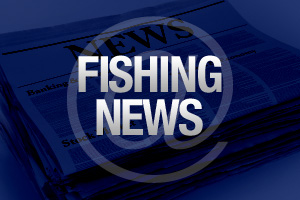Dr Franz Kohl of the European Anglers Alliance presented a call for a Pan-European Cormorant Management Plan to the parliament’s Committee on Fisheries on June 26.
He told members that there were approximately 600,000 breeding cormorants across Europe. When offspring and non-breeders were taken into account, referring to scientist wildlife biologist W. Suter’s estimation model, Dr Franz Kohl showed that a cautious estimate for the total number of cormorants in Europe – excluding Russia – is between 1.7 and 1.8 million birds.
Dr Kohl stressed the importance of treating the rapid growth of the numbers of cormorants as a problem for society – not just for anglers. It is not only anglers who are concerned about fish fauna, it is a general objective of the European society as a whole that fish stocks are able to reach and stay at healthy self-sustaining levels to provide enough fish for both fish-eating animals and human fishermen. And in turn, the angling society is also interested in the overall well-being of the European environment and bird fauna.
He also added that it would be counter-productive to give absolute priority to any particular aspect; a well adjusted balance between the differing objectives is needed.
Dr Kohl stressed the need for more accurate ‘authoritative’ information on the total numbers of cormorants in Europe, as figures for the total European population used by interested parties differs grossly. He asked for a Working Group to more clearly define what was meant by “serious damage” in the EU Birds Directive 1979 and for another Working Group to clarify the criteria and the thresholds for securing the “Favorable Conservation Status” of the cormorant.
The European Fishing Tackle Trade Association (EFTTA) has backed Dr Kohl’s call for a more far-reaching and detailed plan to manage cormorants.
Jean-Claude Bel, EFTTA CEO, said: “While we have the interests of the recreational angler foremost in our minds, the rapid growth of cormorants and the whole effect they are having on the environment is clearly an issue which needs to be addressed at European level.
“We support Dr Kohl’s call for a Pan European Cormorant Management Plan. At the moment, there are differences in opinion on the total numbers of the birds – and we believe the judging criteria for what constitutes ‘serious damage’ should be clarified.
“The Birds Directive is essentially a balanced document but it is interpreted differently from region to region and country to country, and as a result there is widespread legal uncertainty as to what can be done legitimately to control cormorant numbers.
“Clarity in all these areas would certainly be welcomed by EFTTA, its members and recreational anglers in general.”
As a result of the hearing on June 26, German MEP Dr Heinz Kindermann has produced a paper on the cormorant issue to the Committee on Fisheries, which contains several of the arguments highlighted above. The paper has been circulated to the Members of the Committee on Fisheries serving as an additional information source to the cormorant report Mr Kindermann is working on now. This report suggests a Pan European Cormorant Management Plan is put in place. The report will be voted on by the Committee on Fisheries on November 5th and by the European Parliament’s plenary on December 4th






